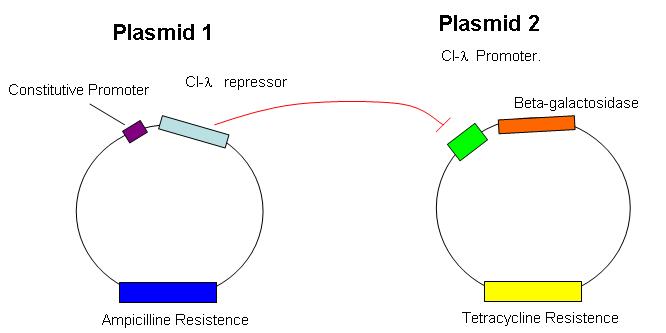Team:Mexico-UNAM-IPN/Horizontal Transfer/Design
From 2008.igem.org
In this model we will use genetically modified E. coli. that will be monitored until a detectable sign appears in the media, indicating an event of horizontal transfer. In order to detect such events, we will use plasmids as the genetic material that could be transferred in a bacterial culture.
These plasmids will express genes that code fluorescent proteins or antibiotic resistance to ampicillin or tetracycline. First of all, we will transform E. coli with the plasmids of interest. Once we have recombinant bacteria, we will cultivate them and we will let them consume all nutrients. Bacteria will die, and our genetically modified plasmids will be released into the media. To eliminate cellular components, this media will be centrifuged, and the supernatant collected to use later. This supernatant with plasmid will be used in a new free-plasmid bacterial culture. These bacteria will act as recipient cells for the plasmid previously released. This new culture will be carefully monitored to detect events of horizontal gene transfer.
 "
"
